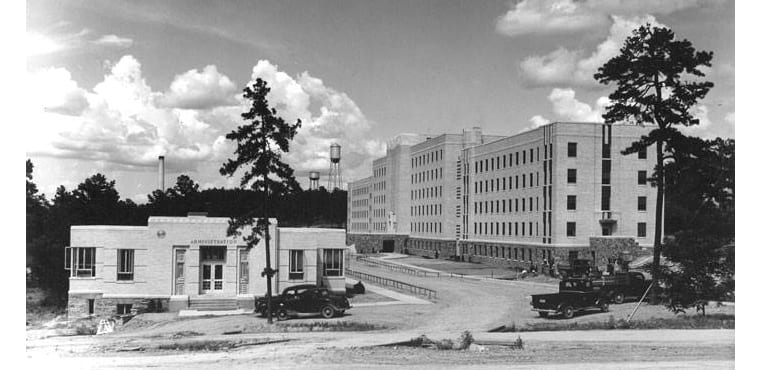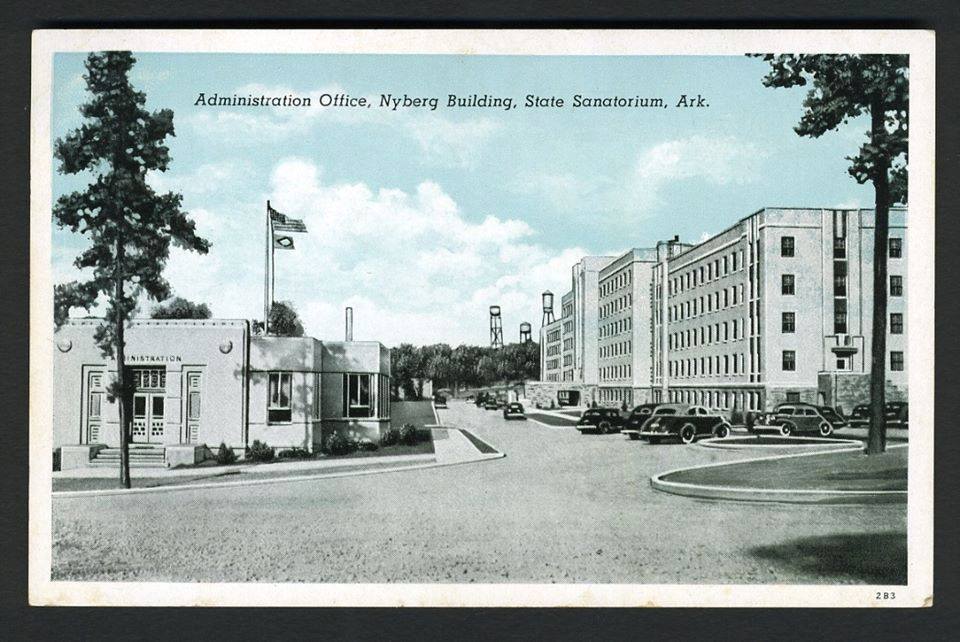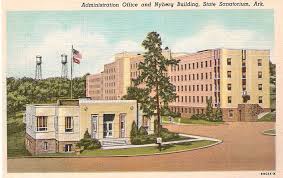By Dr. Curtis Varnell
As a small child, I can remember traveling through Booneville on my way to pick up my young uncle at the state tuberculosis sanatorium just south of the town. An intimidating sight even today, the sanatorium with the five-story, 528-foot-long Nyberg building was one of the largest and scariest places I had ever encountered. Jerry, after a few weeks of treatment, was ready to be released and certainly ready to return home.
Years later, I supervised summer students that worked there through the works study program and discovered it was still an imposing and unsettling place but one that was a life-saver for many.
Around 1900, cases of tuberculosis, always in our population had begun to increase rapidly. TB, as the disease was known, was a bacteria-caused disease that affected the respiratory tracts, scarred the lungs, and resulted in constant coughing and passing of bloody flux from the lungs. The survivor rate was less than 20 percent. The disease had been around for years, in fact, it had caused the death of President Andrew Jackson, Doc Holliday, Chopin, Henry D. Thoreau, and many more. Little Rock alone had more than 100 cases a year. Alarmed, the state legislature created the state sanatorium to isolate the population from the highly contagious disease. Booneville was selected because of its isolation, beauty, and healthful climate.
The site was opened in August of 1910 and, by the end of the year, its population had reached sixty-four. By the time it closed in 1973, it had treated over 70,000 patients and was known worldwide as one of the most successful and modern hospitals for the treatment of TB. Patients from all over the world paid the initial ten dollars a month fee to receive the best treatment available for their illness.
The sanatorium and the nearly nine-hundred acres around it were self-sustaining. They had their own laundry, dairy, water treatment plant, telephone company, and fire department. The chapel was operated by priests from St. Benedicts in Subiaco. It was a city within itself, containing hundreds of patients, 300 employees, and a huge complex of surrounding buildings. At one point, it was larger than its home city, Booneville.
In 1938, during a whistle stop campaign, President Roosevelt stopped at Booneville and pledged more than one-million dollars to expand the facility. The fact that his wife Eleanor was plagued by, and eventually died of TB, may have been a factor in that decision. The huge and imposing Nyberg building was built with some of those funds.
During the 1960s, the Arkansas V.A. hospital discovered that TB was contagious only during the first two weeks of the illness. That, coupled with the development of more effective drugs, eventually resulted in the sanatorium being closed in 1973.
Today, the original sanatorium is operated as the Booneville Human Development Center. An important part of our county and our state, it offers a state-run residential program for adults with mild and moderate developmental disabilities.
Visiting the site today, one little realizes that this small part of our River Valley was noted as the foremost treatment center for one of the deadliest diseases to afflict America.
Photos courtesy of Museum at the Arkansas TB Sanatorium and the Logan County Historical Society










